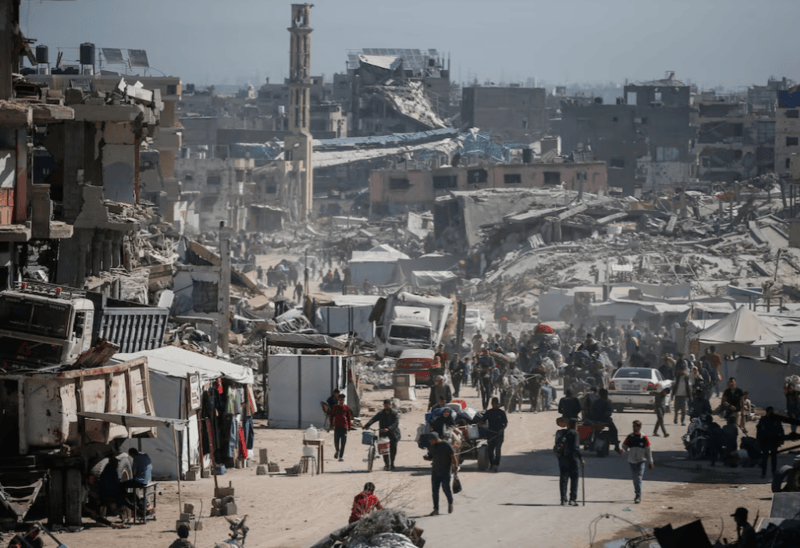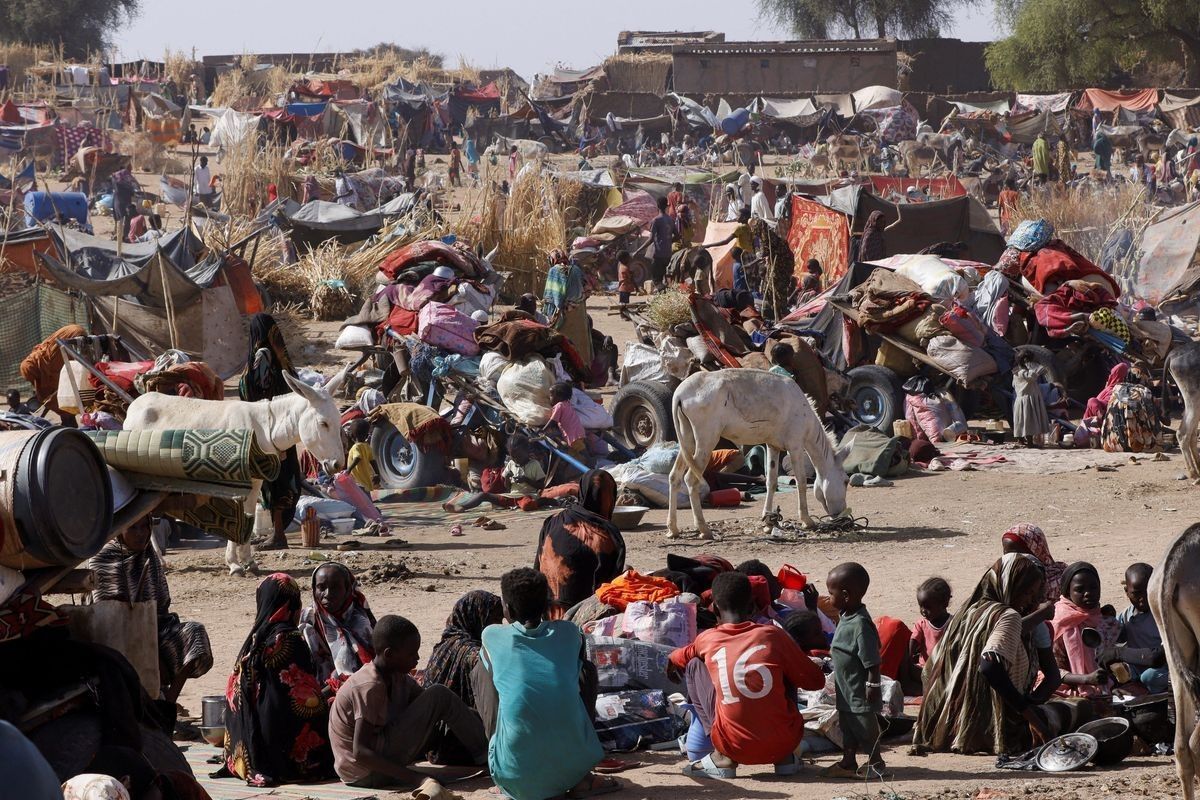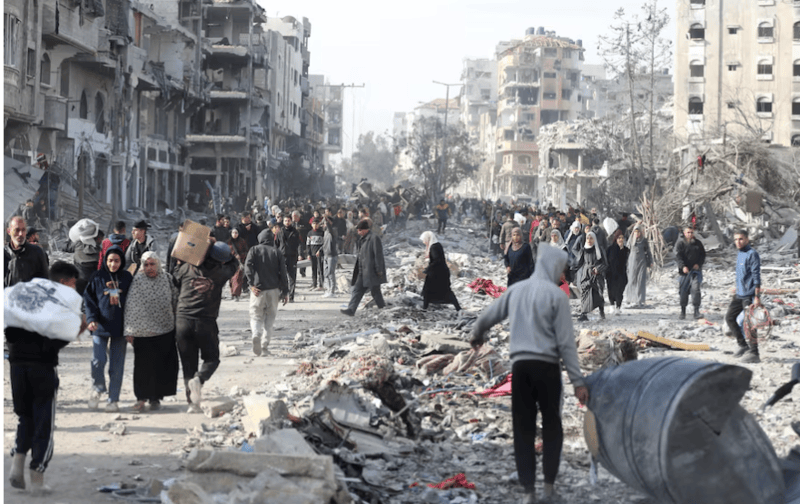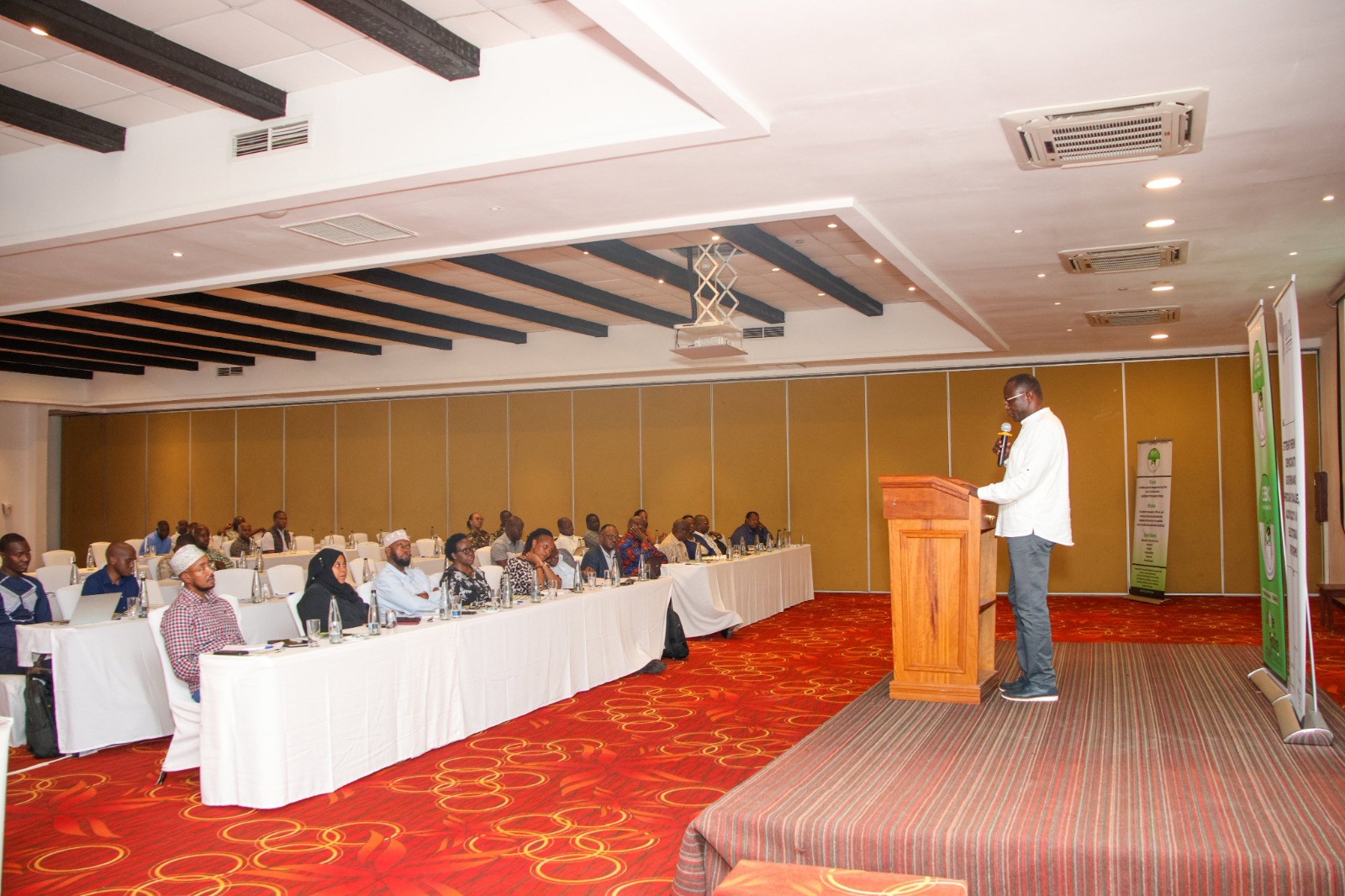36,000 civilian deaths recorded in 2024 conflicts amid widespread use of banned explosives -UN

Notably, civilians, including women and children, continued to bear the brunt of armed conflict, suffering death, injury, forced displacement, enforced disappearance, torture, sexual violence, and other losses in the year.
A United Nations report has revealed that over 120 global conflicts in 2024 caused at least 36,000 civilian fatalities, with heavy explosive weapons deployed in populated areas violating international law.
The Secretary General's report on civilians in armed conflict has shown that civilian death and injury were prominent, including in urban areas where heavy explosive weapons were used and as a result of unexploded ordnance and Improvised Explosive Devices (IEDs).
More To Read
- SHOFCO founder Kennedy Odede awarded 2025 Nelson Mandela Prize
- Fragile serenity: Displaced Sudanese find momentary refuge in Tawila, North Darfur
- 46 killed, 37 injured in paramilitary attack on village in Western Sudan: volunteer groups
- Football returns to Sudan after two-year hiatus amid civil war
- UN warns of worsening humanitarian crisis in Sudan as displacement, hunger and disease escalate
- WFP resumes emergency food airdrops in South Sudan’s Upper Nile State
The report cites Sudan, where frequent artillery shelling and air strikes in densely populated areas targeted civilians.
At the same time, civilians were also killed and injured from the use of explosive weapons in Lebanon, Myanmar, Sudan, Syrian Arab Republic, Ukraine, Gaza, and elsewhere," the report submitted to the UN Security Council adds.
Notably, civilians, including women and children, continued to bear the brunt of armed conflict, suffering death, injury, forced displacement, enforced disappearance, torture, sexual violence, and other losses in the year.
The use of explosive weapons in highly populated areas continued despite member states commitment to the Pact for the Future, that was adopted in September 2024 as an assurance by member states to restrict or refrain from the use of explosive weapons in populated areas when their use may cause harm to civilians, including essential civilian infrastructure, schools, medical facilities and places of worship, as per international law.
 Displaced people ride an animal-drawn cart, following Rapid Support Forces (RSF) attacks on Zamzam IDP camp, in the town of Tawila, North Darfur, Sudan April 15, 2025. (Photo: REUTERS)
Displaced people ride an animal-drawn cart, following Rapid Support Forces (RSF) attacks on Zamzam IDP camp, in the town of Tawila, North Darfur, Sudan April 15, 2025. (Photo: REUTERS)
The report further shows the extent to which landmines and explosive remnants continued to endanger civilians and impede their movement and livelihoods. This was recorded in Afghanistan, the Central African Republic, Colombia, the Democratic Republic of the Congo (DRC), Iraq, Lebanon, Libya, Nigeria, Somalia, South Sudan, the Sudan, the Syrian Arab Republic, Ukraine, Yemen, and the Occupied Palestinian Territory.
"In South Sudan, explosive ordnance contaminated over 22 million square meters of land. In Nigeria, civilian casualties from explosive ordnance rose by 8 per cent compared with 2023. The use of cluster munitions was reported in Lebanon, Myanmar, and Ukraine," the document adds.
At the same time, reports of torture, extrajudicial killings, arbitrary arrest and detention, hostage-taking, enforced disappearance, sexual violence and forced displacement persisted in the Central African Republic, Colombia, the DRC, Mali, the Niger, the Occupied Palestinian Territory and the Afghanistan.
"People detained in Myanmar, the Syrian Arab Republic, and the Occupied Palestinian Territory were reported to have died from extrajudicial executions, torture, or inadequate healthcare. Conditions of detention were described as deplorable – overcrowded and squalid, with poor ventilation, spoiled food, and unsafe drinking water leading to waterborne disease."
On the same note, the International Committee of the Red Cross (ICRC) registered 56,559 new missing persons cases and followed more than 254,000 cases. The number was greater than in 2023 (when the ICRC had registered 40,000 new missing persons cases) and high in several armed conflicts, in particular the DRC, Iraq, Israel, the Sudan, the Syrian Arab Republic, the Russian Federation, Ukraine, and the Occupied Palestinian Territory.
Armed conflict has also led to enduring trauma.
"Bereaved survivors faced a higher risk of depression, anxiety, and stress disorders, suicidal ideation, substance abuse, and disease. Gender discrimination and exclusion have hampered girls' education and women's livelihoods and participation in civic life," the report adds.
 Displaced Palestinians walk past the rubble as they attempt to return to their homes, following a delay in the ceasefire between Israel and Hamas over the hostage list, in the northern Gaza Strip. REUTERS
Displaced Palestinians walk past the rubble as they attempt to return to their homes, following a delay in the ceasefire between Israel and Hamas over the hostage list, in the northern Gaza Strip. REUTERS
Mass displacements
The aggravated suffering also resulted in the displacement of approximately 122.6 million people worldwide remained forcibly displaced due to conflict, persecution, violence, and human rights violations by mid-last year, an increase of 5 per cent, or 5.3 million people, compared with the end of 2023.
"The highest number of new forcible displacements in the first half of 2024 occurred in Colombia, the DRC, Mozambique, Myanmar, the Sudan, Ukraine, and the Occupied Palestinian Territory.
The year also saw more than 280 million people face high levels of acute food insecurity (Integrated Food Security Phase Classification phase 3 and above) in 59 countries and territories, many of them in armed conflict.
Notably, in Sudan, more than half the population, about 25 million people, faced acute food insecurity, with 755,300 of them facing catastrophic conditions.
The report says famine was identified in displacement camps in North Darfur and projected to spread as hostilities and intercommunal land disputes impaired food production and access to agricultural land and drove massive displacement, affecting smallholder farmers, pastoralists, and fishers.
The destruction of water treatment plants and distribution networks in the country also left millions without reliable access to safe drinking water and exposed civilians to waterborne disease.
Attacks damaged the Marawi Dam, disrupting the electricity supply necessary to operate water stations and wells and leaving at least 2.5 million people in Khartoum struggling to gain access to safe water.
In DRC, the killing and kidnapping of farmers, pastoralists, and fishers, the looting of livestock and crops, attacks on markets, land disputes, route closures, and the heavy taxation of agricultural goods disrupted food availability and drove up their prices.
 Palestinians gather to receive food cooked by a charity kitchen, before a ceasefire between Hamas and Israel takes effect, in Khan Younis, in the southern Gaza Strip, January 17, 2025. REUTERS
Palestinians gather to receive food cooked by a charity kitchen, before a ceasefire between Hamas and Israel takes effect, in Khan Younis, in the southern Gaza Strip, January 17, 2025. REUTERS
In Mali, looting, the destruction of granaries and markets, blocked routes, and the contamination of land with explosive remnants of war all compromised food availability.
In Cabo Delgado, Mozambique, violence disrupted agriculture and forced farmers to abandon their land, contributing to a decline in food availability and increasing the cost of food.
In the Central African Republic, a rise in sexual violence led women and girls to abandon working in the fields, leading to food shortages and rising food prices. In Nigeria, women were more likely than men to face severe hunger and have poor food consumption patterns.
The conflicts also led to mass destruction of civilian infrastructure, caused disruptions to electricity, healthcare, water, and sanitation services, education, and livelihoods, depriving many people of the essential services needed to survive.
The number of people who were forcibly displaced reached new highs, with global conflict-related displacement reaching 122.6 million by mid-2024, an increase of five per cent from the end of 2023.
Medical personnel were also harmed and their facilities damaged, leaving patients without care as humanitarian workers and United Nations personnel faced violence, access impediments, and shortages of essential supplies.
Top Stories Today














































